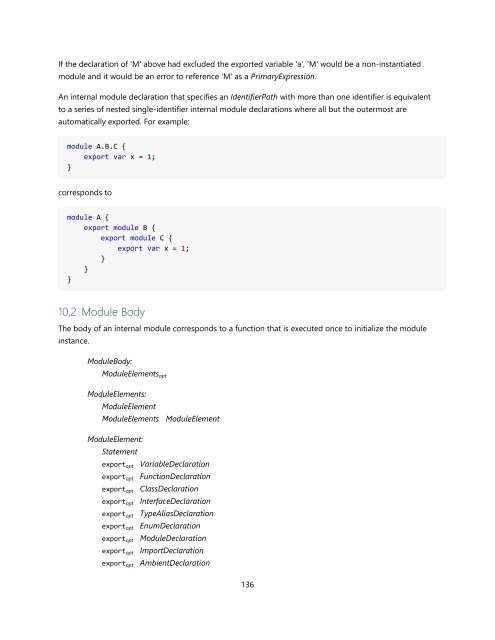TypeScript Language Specification v1.5
TypeScript Language Specification v1.5
TypeScript Language Specification v1.5
Create successful ePaper yourself
Turn your PDF publications into a flip-book with our unique Google optimized e-Paper software.
If the declaration of 'M' above had excluded the exported variable 'a', 'M' would be a non-instantiated<br />
module and it would be an error to reference 'M' as a PrimaryExpression.<br />
An internal module declaration that specifies an IdentifierPath with more than one identifier is equivalent<br />
to a series of nested single-identifier internal module declarations where all but the outermost are<br />
automatically exported. For example:<br />
module A.B.C {<br />
export var x = 1;<br />
}<br />
corresponds to<br />
module A {<br />
export module B {<br />
export module C {<br />
export var x = 1;<br />
}<br />
}<br />
}<br />
10.2 Module Body<br />
The body of an internal module corresponds to a function that is executed once to initialize the module<br />
instance.<br />
ModuleBody:<br />
ModuleElements opt<br />
ModuleElements:<br />
ModuleElement<br />
ModuleElements ModuleElement<br />
ModuleElement:<br />
Statement<br />
export opt VariableDeclaration<br />
export opt FunctionDeclaration<br />
export opt ClassDeclaration<br />
export opt InterfaceDeclaration<br />
export opt TypeAliasDeclaration<br />
export opt EnumDeclaration<br />
export opt ModuleDeclaration<br />
export opt ImportDeclaration<br />
export opt AmbientDeclaration<br />
136


















